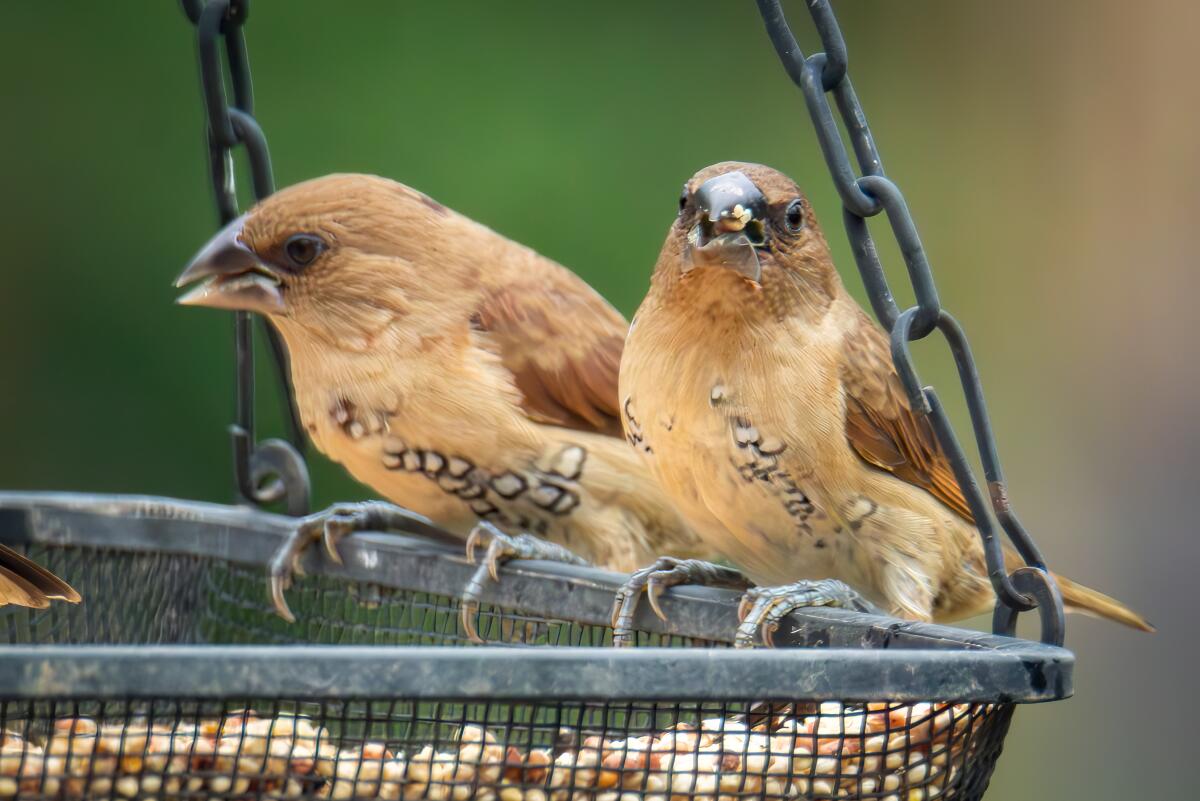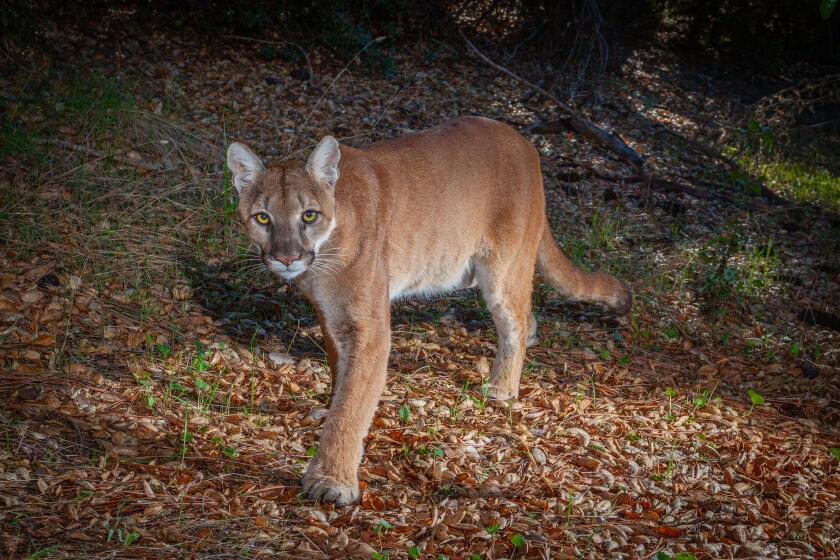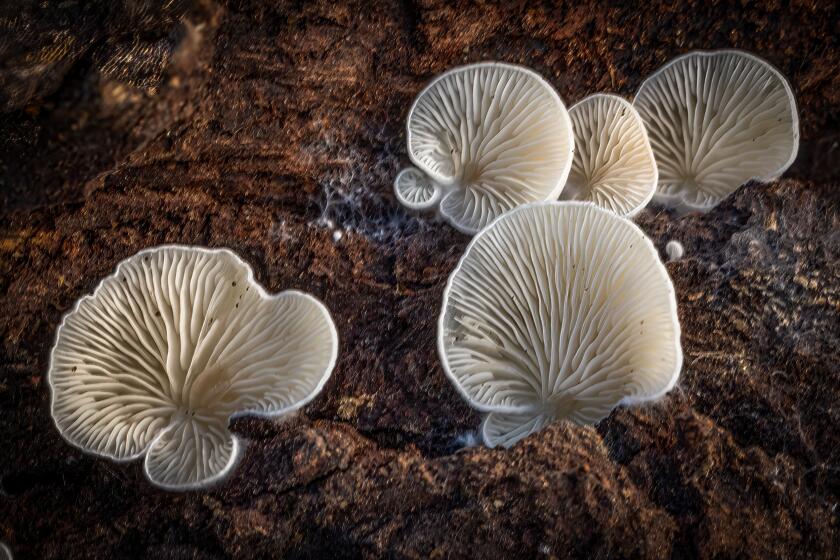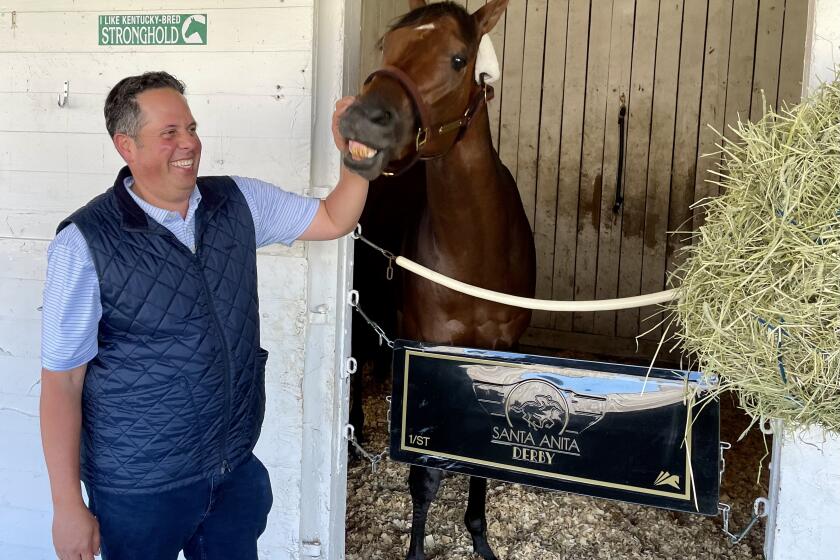Outdoors: This feathered guest goes by several names

The nutmeg mannikin, also known as the spice finch, spotted munia or scaly-breasted munia, makes an appearance at Mt. Hoo
It’s always fun when a new face shows up at Mt. Hoo.
Sometimes it’s just the return of a seasonal visitor, like the arrival last week of the first white-crowned sparrow for the winter.
Or it might be that rare fly-by of a zone-tailed hawk or bald eagle.
This time it was a totally new visitor, mingling with some old friends pecking away at the variety of seeds in a hanging basket just outside my office window.
What caught my eye was a darker bird among the animated clutch of yellow lesser goldfinch.
Grabbing my binoculars, I was looking at a small bird, with deep reddish-brown face and neck, lighter brown back and wings, and a distinctly marked breast that looked like scales. I realized this new visitor was a nutmeg mannikin hanging out with his lesser goldfinch buddies.
I was aware these birds were in the area, and had seen them nearby. This was a pair and they would become regular visitors to my feeder.
Other eagle-eyed birders had recently sent notes and photos asking what this bird was. It was also a new sighting for them. Apparently, this non-native exotic has become quite fond of Southern California.
The story of the nutmeg mannikin is an interesting one.
It’s a bird with many names.
Officially called the nutmeg mannikin by the California Bird Records Committee when added to the official state bird list in 2013, it is also known as the spice finch, or spotted munia. Ebird.org records them as scaly-breasted munia because of their distinctive scale-like marking on the breast.
This sparrow-sized waxbill is a native to Southeast Asia that has been sold in pet shops for years as caged birds. Their gentle nature, long life and bright spirit make them excellent pets, especially for youngsters just getting started with taking care of animals.
Over time, it is likely that these pet birds were either released or escaped, and as numbers in the wild increased they adapted well to their surroundings, particularly in milder climates of Florida and California. Eventually they colonized and formed breeding populations, and their numbers in the wild began to increase even more.
Reports of these dainty little birds in the wild were first noted in 1964 when fledglings were observed in a nest in Cocoa Beach, Fla.
By 1999, flocks of mannikin were being seen in river drainages in Los Angeles and Orange counties.
According to Phil Unitt, curator of birds and mammals at the San Diego Natural History Museum, sightings in San Diego County were only sporadic in 2000, and mostly in the Tijuana River Valley.
Today, a quick look at ebird.org shows the scaly-breasted munia has adapted well to our balmy climate, becoming a common year-round species with thousands of recorded sightings from coastal areas to inland oak woodlands and grasslands. They seem to be absent from higher elevations east of Alpine, Ramona or Valley Center, and only a few sightings in the desert community of Borrego Springs.

Apparently, the hospitality at Mt. Hoo is to their liking, as I am now seeing them daily at the feeders, often in the company of the colorful lesser goldfinch.
As mentioned earlier, the first white-crowned sparrow of winter arrived last week, and by now you should also be seeing yellow-rumped warblers. These will be some of our most common birds until they return north in the spring.
Both winter visitors bring color and activity to local gardens and feeders.
The white-crowns will eagerly dine at your seed feeders, and the yellow-rumps will flock into your shrubs to forage for insects, mosquitoes, flying ants and larvae.
Annual bird count
The annual San Diego Audubon Christmas Bird Count will take place again this year near the end of December. This is part of a nationwide effort by nature lovers to get a snapshot of bird populations throughout the country.
Six counts are conducted here in areas known as circles centered in San Diego, Escondido, Oceanside, Borrego Springs, Lake Henshaw and Rancho Santa Fe.
Participants fan out within a 15-mile circle and record all the birds they see during the one-day count.
Anyone is welcome to be part of the effort, and new birders are often teamed up with veterans. It’s a great way to learn about the birds of our area.
This annual event began in 1900 when a group of birders decided to establish a holiday tradition.
After their meal, the small group of 27 enthusiasts headed into the field to conduct a bird census, recording about 90 species.
Today, tens of thousands of bird lovers join in the annual event between Dec. 14 and Jan. 5.
According to the National Audubon Society, 78,880 counters participated last year in the United States, Canada, Latin America and the Pacific Islands, recording nearly 43 million birds and 2554 species.
For more information, contact San Diego Audubon at (858) 273-7800.
Cowan is a freelance columnist. Email ernie@packtrain.com or visit erniesoutdoors.blogspot.com.
Get Essential San Diego, weekday mornings
Get top headlines from the Union-Tribune in your inbox weekday mornings, including top news, local, sports, business, entertainment and opinion.
You may occasionally receive promotional content from the San Diego Union-Tribune.









